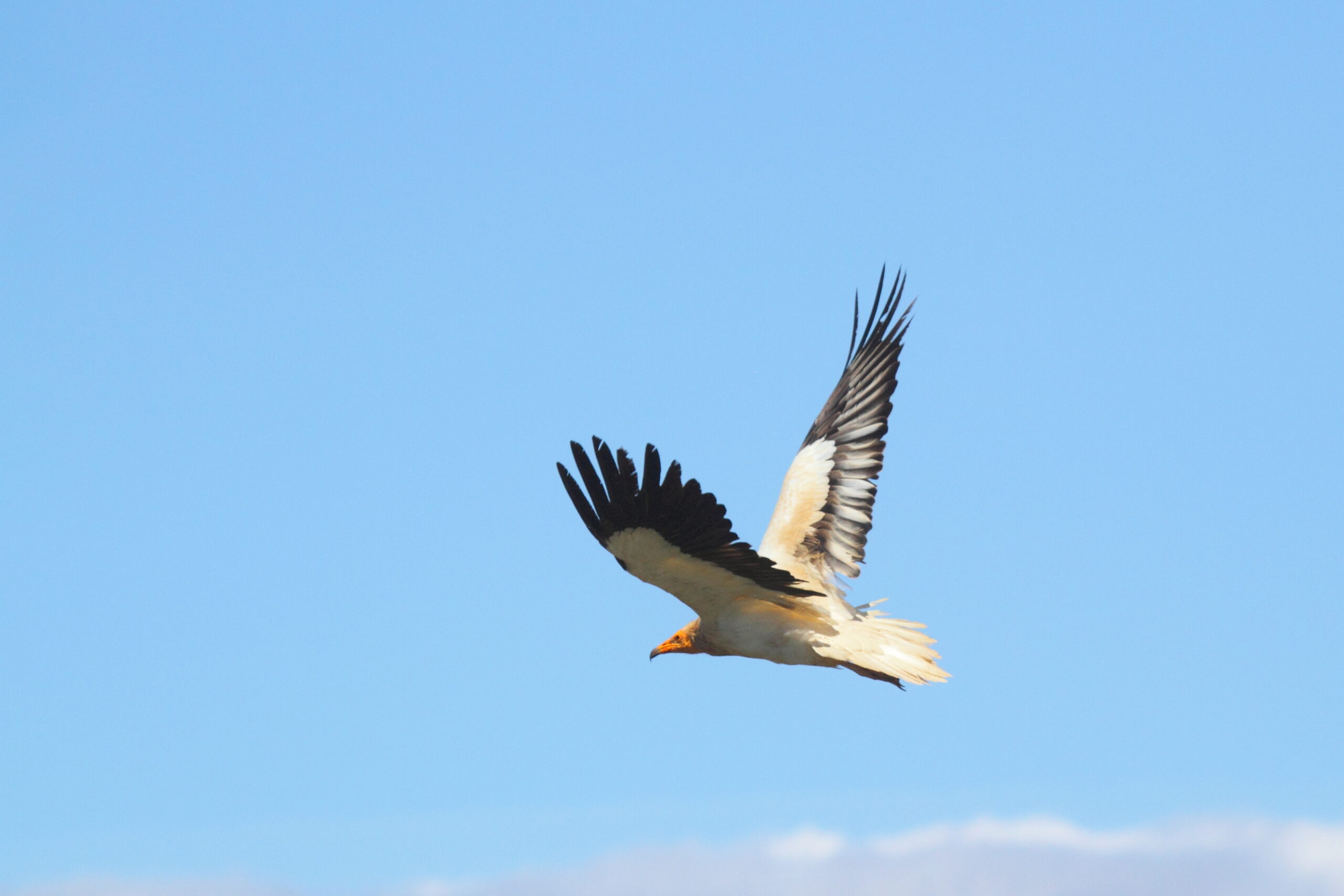
The Egyptian Vultures New LIFE project is the latest conservation programme for Egyptian vultures in the Balkans from the team behind the award winning Return of the Neophron and is possibly the most ambitious Egyptian vulture conservation initiative undertaken.
Balkan Egyptian vultures.
The globally endangered Egyptian vulture is the only long-distance migrant among the four European vulture species. The core Balkan population in Bulgaria and Greece, with additional pairs in Albania and the Republic of Macedonia, migrates to wintering grounds that largely overlap with resident populations in West Africa, the Sahel, East Africa and the Arabian Peninsula.
Most European breeding pairs (80 per cent) are concentrated in the Iberian Peninsula. Elsewhere the population is highly fragmented, with about 230 pairs nesting in the Caucasus, but only 80 in the Balkans and less than 10 pairs in the Apennine peninsula (both critically endangered).
Thus, the Balkan pairs act as a bridge between the Asian and the Iberian populations, and are essential for the conservation status of the species on the whole continent.
The Egyptian Vulture New LIFE
The Return of the Neophron programme, which ran between 2011 and 2016, successfully undertook urgent conservation actions to prevent the extinction of Egyptian vultures in Bulgaria and Greece. The Egyptian Vulture New LIFE builds on this works and is one of the ever vulture conservation initiatives over the next five years.
The programme aims to reinforce the vulture population in Europe’s easternmost range by delivering conservation measures that eliminate major known threats such as illegal poisoning and electrocution in the breeding grounds, stabilising this Balkan population will ensure the species survival in its global range. This breeding population will also be reinforced by restocking actions to boost the species recovery.
Experimental Egyptian vulture releases
Here at the Vulture Conservation Foundation we are involved in the project’s experiemental release procedure to test release techniques for captive-bred Egyptian vultures from the Egyptain Vulture Captive Breeding Network EEP and measure their survival and migration behaviour. As part of this experiment there will be different release techniques used. Firstly, chicks from the network will be fostered in wild nests and closely monitored by conservation staff from the Bulgarian Society for the Protection of Birds, like these chicks born recently in Prague Zoo
The second release technique that will be used will be the traditional hacking technique, where chicks will be released in artificial enclosed surrogate nest where they will be fed (without any human contact) and looked after from a monitoring point in the distance.
The final technique used will involve a delayed release the following spring after hatching in captivity. Chicks were transported to Bulgaria back in December and released back in May and doing well in their new surroundings.
International co-operation
The Egyptian Vulture New LIFE project will see organisations and institutions from 14 countries spanning Europe, the Middle East and Africa joining forces to carry out conservation actions not only in Europe but all along the flyway, which will be vitally important for this migratory species. This work will be in line with the recommendations from the Egyptian Vulture Flyway Action Plan and is a key component of the implementing actions from Vulture Multi-species Action Plan.
This is a fantastic programme and will make significant impact on Egyptian vultures populations in Europe.
We’ll be bringing you the latest updates from the project, but you can also check out the project website for news.





